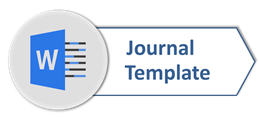Exploring Teachers’ Use of First Language (L1) in EFL Classroom
Abstract
Full Text:
PDFReferences
Borlongan, A. M., Lim, J. H., & Roxas, R. E. 2012. University Students’ Attitude towards English-Tagalog Code-Switching in Classroom Instruction. TESOL Journal, 70–77.
Cahyani, H., de Courcy, M., & Barnett, J. 2016. Teachers’ code-switching in bilingual classrooms: Exploring pedagogical and sociostructural functions. International Journal of Bilingual Education and Bilingualism, 1–15.
Chavez, M. 2016. The first language in the foreign language classroom: teacher model and student language use – an exploratory study. Classroom Discourse, 7(2), 131–163. https://doi.org/10.1080/19463014.2016.1149499.
Cook, V. 2001. Using the first language in the classroom . The Canadian Modern Language Review.
Creese, A. 2005. Teacher Collaboration and Talk in Multilingual Classrooms. Multilingual Matters Ltd.
Diffily, D., & Sassman, C. 2006. Positive Teacher Talk for Better Classroom Management. New York: Scholastic Inc.
Ferguson, G. 2009. What next? Towards an agenda for classroom code-switching research. . International Journal of Bilingual Education and Bilingualism, 231–241.
Gardner-Chloros, P. 2009. Code-Switching. Cambridge: Cambridge University Press.
Greene, J., & Caraceilli, V. J. 1997. Defining and describing the paradigm issue in mixed-method evaluation. New Directions for Evaluation, 5–17.
Have, P. T. 2007. Doing Conversation Analysis: A Practical Guide. London: Sage Publications Ltd.
Jingxia, L. 2010. Teachers’ Code-Swithing to the L1 in EFL Classroom. The Open Applied Linguistics Journal, 3, 10–23.
Kiasi, M. A., & Hemmati, F. 2014. The Importance of Teaher Talk in Teaching EFL Writing. Porta Linguarum, 95–108.
Koshik, I. 2002. Designedly incomplete utterance: A pedagogical practice for eliciting knowledge displays in error correction sequences. Research on Language and Social Interaction, 277–309.
Koshik, I. 2005. Alternative questions used in conversational repair. Discourse Studies, 193–211.
Lee, Y. 2007. Third turn position in teacher talk: Contingency ad the work of teaching. Science Direct, 180–206.
Lynch, T. 1991. Questioning roles in the classroom. ELT Journal, 45(3), 201–210. https://doi.org/10.1093/elt/45.3.201.
Macaro, E. 2006. Strategies for language learning and for language use: Revising the theoretical framework. The Modern Language Journal, 320–337.
Macaro, E., & Lee, J. H. 2013. Teacher language background, codeswitching, and English-only instruction: Does age make a difference to learners’ attitudes? . TESOL Quarterly, XLVII(4), 717–742.
Manara, C. 2007. The use of L1 support: Teachers’ and students’ Opinion and practices in an Indonesian context. . The Journal of ASIA TEFL, 4(1), 145–178.
Nunan, D., & Bailey, K. M. 2009. Exploring Second Language Classroom Research: A Comprehensive Guide. Boston: Heinle Cengage Learning.
Seedhouse, P. 2004. Conversation analysis methodology. Language Learning, 1–54.
Sharpe, T. 2008. How can teacher talk support learning? Science Direct, 132–148.
Sinclair, J., & Coulthard, M. 2002. Towards an analysis of discourse. In Advances in Spoken Discourse Analysis . New York: Routledge.
Viiri, J., & Saari, H. 2006. Teacher talk pattern in science lessons: Use in teacher education. Journal of Science Teacher Education, 347–365.
Wong, J., & Waring, H. Z. 2010. Conversation Analysis and Second Language Pedagogy. New York: Routledge.
DOI: https://doi.org/10.33365/ts.v18i1.483
Refbacks
- There are currently no refbacks.
Copyright (c) 2020 Elisabeth Marsella

This work is licensed under a Creative Commons Attribution-ShareAlike 4.0 International License.
Teknosastik: Jurnal Bahasa dan Sastra
Publisher: Universitas Teknokrat Indonesia
Address: Zainal Abidin Pagaralam Street 9-11, Bandar Lampung, Indonesia
Website: https://ejurnal.teknokrat.ac.id/index.php/teknosastik/index

Creative Commons Attribution-ShareAlike 4.0 International License






